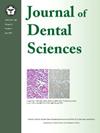Automatic classification of temporomandibular joint disorders by magnetic resonance imaging and convolutional neural networks
IF 3.4
3区 医学
Q1 DENTISTRY, ORAL SURGERY & MEDICINE
引用次数: 0
Abstract
Background/purpose
In this study, we utilized magnetic resonance imaging data of the temporomandibular joint, collected from the Division of Oral and Maxillofacial Surgery at Taipei Veterans General Hospital. Our research focuses on the classification and severity analysis of temporomandibular joint disease using convolutional neural networks.
Materials and methods
In gray-scale image series, the most critical features often lie within the articular disc cartilage, situated at the junction of the temporal bone and the condyles. To identify this region efficiently, we harnessed the power of You Only Look Once deep learning technology. This technology allowed us to pinpoint and crop the articular disc cartilage area. Subsequently, we processed the image by converting it into the HSV format, eliminating surrounding noise, and storing essential image information in the V value. To simplify age and left-right ear information, we employed linear discriminant analysis and condensed this data into the S and H values.
Results
We developed the convolutional neural network with six categories to identify severe stages in patients with temporomandibular joint (TMJ) disease. Our model achieved an impressive prediction accuracy of 84.73%.
Conclusion
This technology has the potential to significantly reduce the time required for clinical imaging diagnosis, ultimately improving the quality of patient care. Furthermore, it can aid clinical specialists by automating the identification of TMJ disorders.
利用磁共振成像和卷积神经网络对颞下颌关节疾病进行自动分类
背景/目的在本研究中,我们使用台北退伍军人总医院口腔颌面外科的颞下颌关节磁共振影像资料。我们的研究重点是利用卷积神经网络对颞下颌关节疾病的分类和严重程度进行分析。材料和方法在灰度图像序列中,最关键的特征通常位于关节盘软骨内,位于颞骨和髁的交界处。为了有效地识别这个区域,我们利用了You Only Look Once深度学习技术的力量。这项技术使我们能够精确定位和切除关节盘软骨区域。随后,我们对图像进行处理,将其转换为HSV格式,消除周围噪声,并将图像的基本信息存储在V值中。为了简化年龄和左右耳信息,我们采用线性判别分析,将这些数据浓缩为S值和H值。结果建立了6个分类的卷积神经网络来识别颞下颌关节(TMJ)疾病的严重分期。我们的模型达到了令人印象深刻的84.73%的预测精度。结论该技术有可能显著减少临床影像学诊断所需的时间,最终提高患者的护理质量。此外,它可以通过自动识别颞下颌关节疾病来帮助临床专家。
本文章由计算机程序翻译,如有差异,请以英文原文为准。
求助全文
约1分钟内获得全文
求助全文
来源期刊

Journal of Dental Sciences
医学-牙科与口腔外科
CiteScore
5.10
自引率
14.30%
发文量
348
审稿时长
6 days
期刊介绍:
he Journal of Dental Sciences (JDS), published quarterly, is the official and open access publication of the Association for Dental Sciences of the Republic of China (ADS-ROC). The precedent journal of the JDS is the Chinese Dental Journal (CDJ) which had already been covered by MEDLINE in 1988. As the CDJ continued to prove its importance in the region, the ADS-ROC decided to move to the international community by publishing an English journal. Hence, the birth of the JDS in 2006. The JDS is indexed in the SCI Expanded since 2008. It is also indexed in Scopus, and EMCare, ScienceDirect, SIIC Data Bases.
The topics covered by the JDS include all fields of basic and clinical dentistry. Some manuscripts focusing on the study of certain endemic diseases such as dental caries and periodontal diseases in particular regions of any country as well as oral pre-cancers, oral cancers, and oral submucous fibrosis related to betel nut chewing habit are also considered for publication. Besides, the JDS also publishes articles about the efficacy of a new treatment modality on oral verrucous hyperplasia or early oral squamous cell carcinoma.
 求助内容:
求助内容: 应助结果提醒方式:
应助结果提醒方式:


